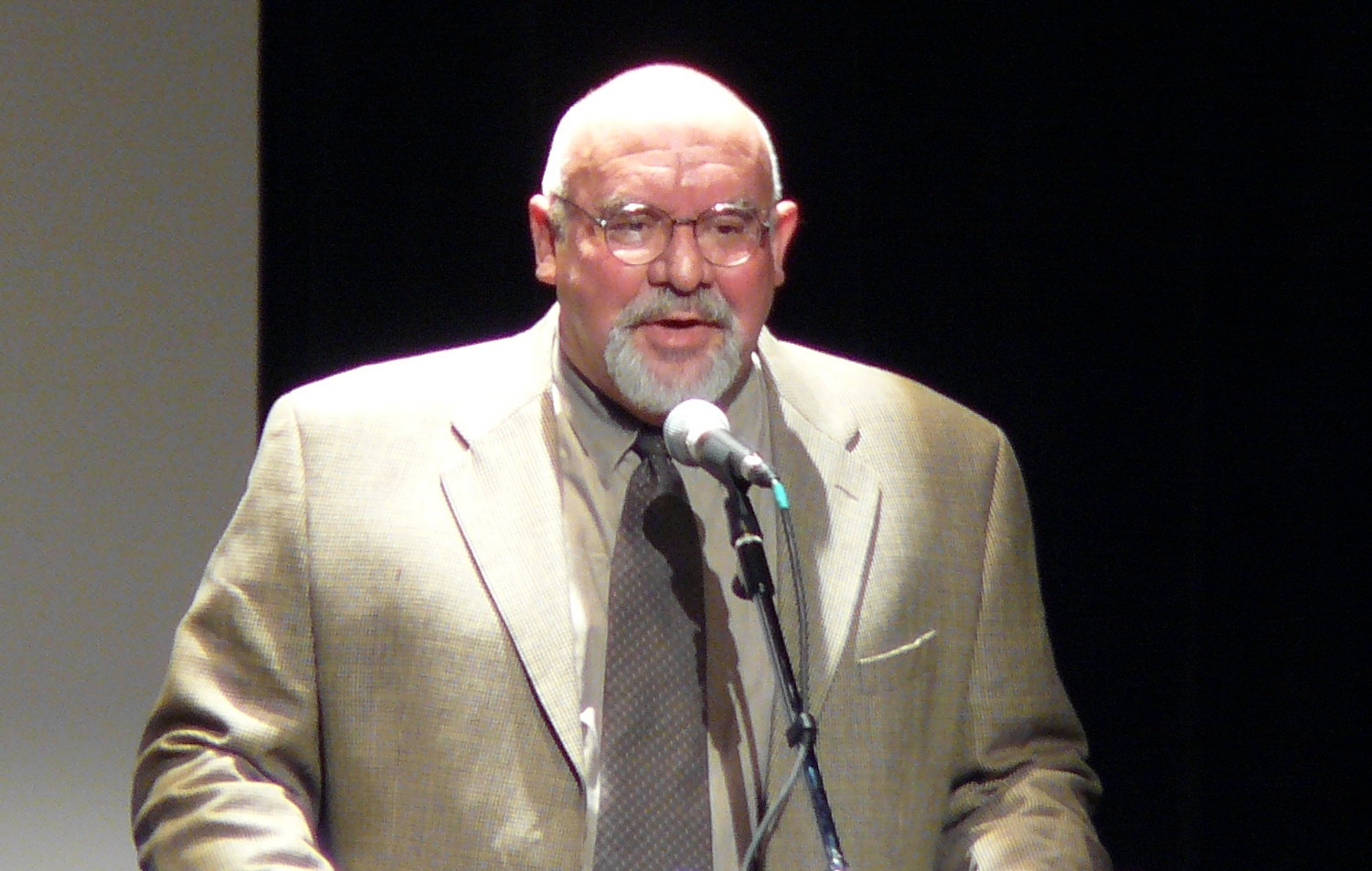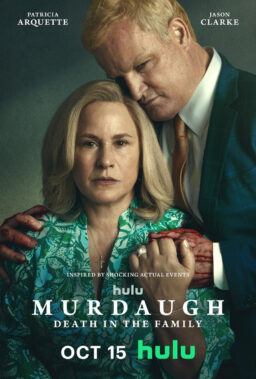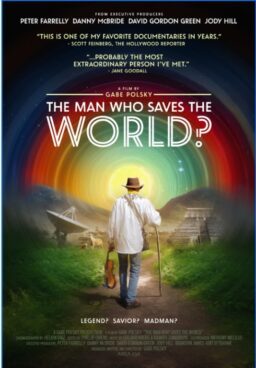Most of the obituaries for Stuart Gordon, who passed away yesterday at the age of 72 from multiple organ failure, will no doubt describe him as a “Master of Horror” and not just because of his contributions to the television anthology series of the same name. He pretty much owned that particular designation from the moment that audiences first saw “Re-Animator,” the 1985 jaw (among other body parts)-dropper that marked his big-screen directorial debut. While he is obviously best known for that instant classic, Gordon would prove to be much more than a one-trick pony with an eclectic resume, encompassing everything from groundbreaking theatrical explorations to a number of fascinating projects well outside of the typical parameters of the horror genre.
Gordon was born in Chicago on August 11, 1947, and went on to attend college at the University of Wisconsin-Madison. Unable to enroll in any film classes, he ended up majoring in theatre and while still a student, he formed his first stage company, the Screw Theater. The group made national headlines in 1968 when a modern-day and heavily politicized take on “Peter Pan”—complete with Captain Hook and his pirates being replaced with Mayor Richard J. Daley and his police and a psychedelic light show projected on the bodies of several naked actors—led to him and his future wife and collaborator, Carolyn Purdy, being arrested on obscenity charges. Although the charges were dropped, the university then insisted that any future productions by Screw Theater be overseen by university officials. Gordon responded by leaving the university and forming another group, Broom Street Theater, in 1969, premiering with a new translation of Lysistrata.
Later that year, Gordon, with Purdy-Gordon, went to Chicago to set up his latest venture, the Organic Theater Company, where he served as artistic director and produced and directed 37 shows that utilized such up-and-coming actors as Joe Mantegna, Dennis Franz, and Meshach Taylor. The group became the talk of the town and a number of their productions would go on to national prominence, including David Mamet’s modern comedy of manners Sexual Perversity in Chicago, the Chicago Cubs fan homage Bleacher Bums and E/R, a long-running show about the overworked doctors in a Chicago emergency room that would go on to inspire a television series featuring George Clooney. (No, not that one—this one premiered a decade earlier, starred Elliott Gould and only lasted a few months before being cancelled.) The one drawback to the success of the company was that a number of the actors were know being called away to do films.

Gordon’s entrance into the film world began when he was pointed in the direction of Herbert West—Reanimator, a long out-of-print story by celebrated horror author H.P. Lovecraft that was so obscure he was only able to find it in the rare books section of the Chicago Public Library. He originally conceived the idea of adapting it as a stage production and then as a television pilot, but was eventually convinced that the only real market for horror productions at the time was in feature films. He, along with co-writers Dennis Paoli, William Norris, and producer Brian Yuzna, made the film in Hollywood for about $900,000 and landed a distribution deal with Empire Pictures, a studio specializing in schlocky genre films. A good chunk of that budget would evidently go to the elaborate and decidedly gruesome makeup effects seen throughout the film to replicate the corpses in various states of decay and worse. According to makeup artist John Naulin, until “Re-Animator,” he had never used more than two gallons of fake blood on any single project—on that one, he used 24. The final result was so bloody, in fact, that when the film premiered in theaters in 1985, it ended up going out unrated instead of cutting it down to achieve an “R” rating. (This editing would be done later so that the film could appear on the shelves of stores like Blockbuster that forbade unrated films from appearing on their shelves.)
If you were to base your opinion solely on the film’s admittedly lurid ads—which featured a mad scientist-type standing over a head in a pan with the tag line “Herbert West Has A Very Good Head On His Shoulders … And Another One On His Desk”—you might be forgiven for dismissing it as just another trashy barfbag movie destined for no greater glory than two pages in the current issue of Fangoria before slipping into obscurity. Luckily, some people looked beyond that ad and discovered that the film was the kind of diamond in the rough that horror fans dream of. Yes, it was incredibly gruesome, but once you got beyond the spraying blood and flying entrails, you began to realize that you were watching something truly inspired. It may have been a debut film but you never would have guessed it from the results—it was made with a skillfulness and energy that put more sophisticated genre efforts of the era to shame. “Re-Animator” contained some impressive performances, especially the cooly unhinged turn by Jeffrey Combs as the ambitious doctor who discovers a serum to bring the dead back to life, and the cheerfully over-the-top work by David Gale as his adversary, both in life and death, as well as a surprisingly droll sense of humor that helped make some of the more outre moments (including an instantly notorious visual pun involving actress Barbara Crampton and stuff that still probably cannot be printed here) palatable.
Although the film was not a box-office smash, largely because of the unrated status that prevented it from playing in many theaters, “Re-Animator” was an instant cult sensation and put Gordon on the map as a talent to watch. For his follow-up, he would reunite with most of the “Re-Animator” gang for another Lovecraft adaptation, a film version of the story “From Beyond” (1986). In this hallucinatory horror, scientists Edward Pretorius (Ted Sorel) and Crawford Tillinghast (Combs) have invented a device called the Resonator designed to stimulate the pineal glad and allow users to see beyond perceived reality. Needless to say, this does not go well and the experiments end up transforming Pretorius into a grotesque shapeshifting monster. The results were just as gruesome and bizarre as in his previous film, but the tone proved to be darker and kinkier (even after being cut for an “R” rating) and although “From Beyond” received generally positive reviews and would eventually become a cult favorite as well, it was considered to be a bit of a disappointment at the time. It may not be “Re-Animator”—no other movie could be—but it is still a superior work that proves that Gordon was a filmmaker with a genuine artistic vision, grisly though it might be.

Following his next film, “Dolls” (1987), an underrated take on the haunted toy subgenre, Gordon began to move outside of the horror genre, though not without difficulty. His next movie was “Robot Jox,” a dystopian sci-fi saga about a future world in which giant manned robots fight international conflicts, but it was a troubled production thanks to the bankruptcy of Empire Pictures that delayed its release for three years until 1990, when it quickly disappeared. In an all-but-unthinkable move, he was all set to direct a project that he helped to write for none other than Disney Studios until illness forced him to officially drop out of “Honey, I Shrunk the Kids” (1989). (He would retain a writing credit on the film, be credited as a producer on “Honey, I Blew Up the Kid” and would eventually direct an episode of the TV spinoff in 1998). For the next few years, Gordon would alternate between sci-fi and horror projects, directing an impressive 1991 adaptation of “The Pit and the Pendulum,” the futuristic prison thriller “Fortress” (1992), the low-budget monster movie “Castle Freak” (1995) and the sci-fi comedy “Space Truckers” (1996) with Stephen Dorff and Dennis Hopper. In addition, he contributed to the screenplays of Abel Ferrara’s “Body Snatchers” (1994) and the Corbin Bernsen horror film “The Dentist.” None of these pictures, save for the Ferrara, were especially great but none of them were disposable junk either, thanks in no small part to his consummate skill as a filmmaker.
In another surprise move, Gordon’s next film was “The Wonderful Ice Cream Suit” (1998), a gentle fantasy based on a short story by Ray Bradbury (who also penned the screenplay) about a group of five men (played Joe Mantegna, Esai Morales, Edward James Olmos, Clifton Collins Jr., and Gregory Sierra) who pool their meager resources to buy a share a magnificent white suit that turns out to have the power to make the wishes of the person wearing it come true. It remains one of the very best films based on Bradbury but it was barely released and quickly disappeared, though it remains ripe for rediscovery. Gordon’s follow-up, “Dagon” (2001), was a Spanish production that put him back in more familiar territory by adapting another Lovecraft story—in this case, not his actual Dagon story but The Shadow Over Innsmouth. The result is not entirely without merit—the first half is fairly strong—but it remains the least interesting of his Lovecraft adaptations. Two years later, Gordon would step out of the horror box again with “King of the Ants,” which sounds like a monster movie, but was actually a dark and fairly gripping crime film about a young man who goes after the gangsters who hired him to kill a man and they tried to murder him instead of paying him for the job.

For what would prove to be his last two features, Gordon moved away from straightforward genre exercises, a choice that lead to his strongest work since his first two films. Based on the 1982 play by David Mamet (who also wrote the screenplay), “Edmond” (2005) was a lacerating look at masculinity in its most toxic form featuring William H. Macy (in one of his very best performances) as an ordinary middle-aged man who is told by a fortune teller that “you are not where you belong,” a revelation that inspires him to tear up his life in increasingly violent and unhinged ways as he makes his way to the place where he may actually belong. This is dark, unsparing material that asks you to spend 80 minutes in the company of a man unraveling in the most horrific and unsparing manner imaginable, but Gordon locks into his mindset in a manner that allows you to actually empathize, though not sympathize, with what he is going through while refusing to mitigate his repulsive deeds. There is a long sequence in the middle chronicling an encounter between Edmond and a waitress (Julia Stiles) that he picks up that pretty much covers the waterfront in terms of emotions—it goes from giddiness to despair to savagery in the space of a few minutes. Gordon presents it so brilliantly (aided by the performances by Macy and Stiles, of course) that it may well be the single strongest scene of his entire career.
Gordon’s final film, “Stuck” (2007), may have appeared to be a horror movie on the surface but was really a two-character morality drama studded with jet-black humor and searing social commentary. Inspired by a real-life incident, “Stuck” starred Mena Suvari as Brandi, a young woman who is driving home one night after celebrating a big promotion at the nursing home where she works when she hits Tom (Stephen Rea), a man who has just recently lost his job and apartment, leaving him lodged in her windshield. She is able to get home without being noticed and parks the car in her garage, promising to call for help. Realizing that doing so will cost her the new job, she elects to let Tom slowly die in the garage rather than face her responsibilities. Although it stumbles a bit in the final minutes, the film is otherwise a smartly executed, bitterly funny, and genuinely angry look at a contemporary mindset in which it is easier to let a man die in the next room rather than call for help and risk an unnecessary hassle.
When I interviewed Gordon at the time of the release of “Edmond,” he spoke of plans to make “House of Re-Animator,” which supposedly would have been set in the White House and would have featured William H. Macy as the president and Jeffrey Combs back as Herbert West, but that never panned out. In his later years, he moved into television with a TV production of “Bleacher Bums” (2002), two installments of the “Masters of Horror” series between 2005 and 2007 and an episode of the 2008 series “Fear Itself.” In 2009, he returned to the stage to direct Combs in the one-man show “Nevermore … An Evening with Edgar Allan Poe.” In 2011, he revisited his greatest screen triumph by co-writing, directing and producing the acclaimed stage production Re-Animator: The Musical. He then followed that with Taste, a 2014 play based on the real-life deeds of Armin Meiwes, a.k.a. the Rotenburg Cannibal. Gordon also wrote his autobiography, Naked Theater and Uncensored Horror, which Fangoria is scheduled to publish later this year. Considering the artistic legacy that he has left behind, that book should be a must-read for any fan of his work.












